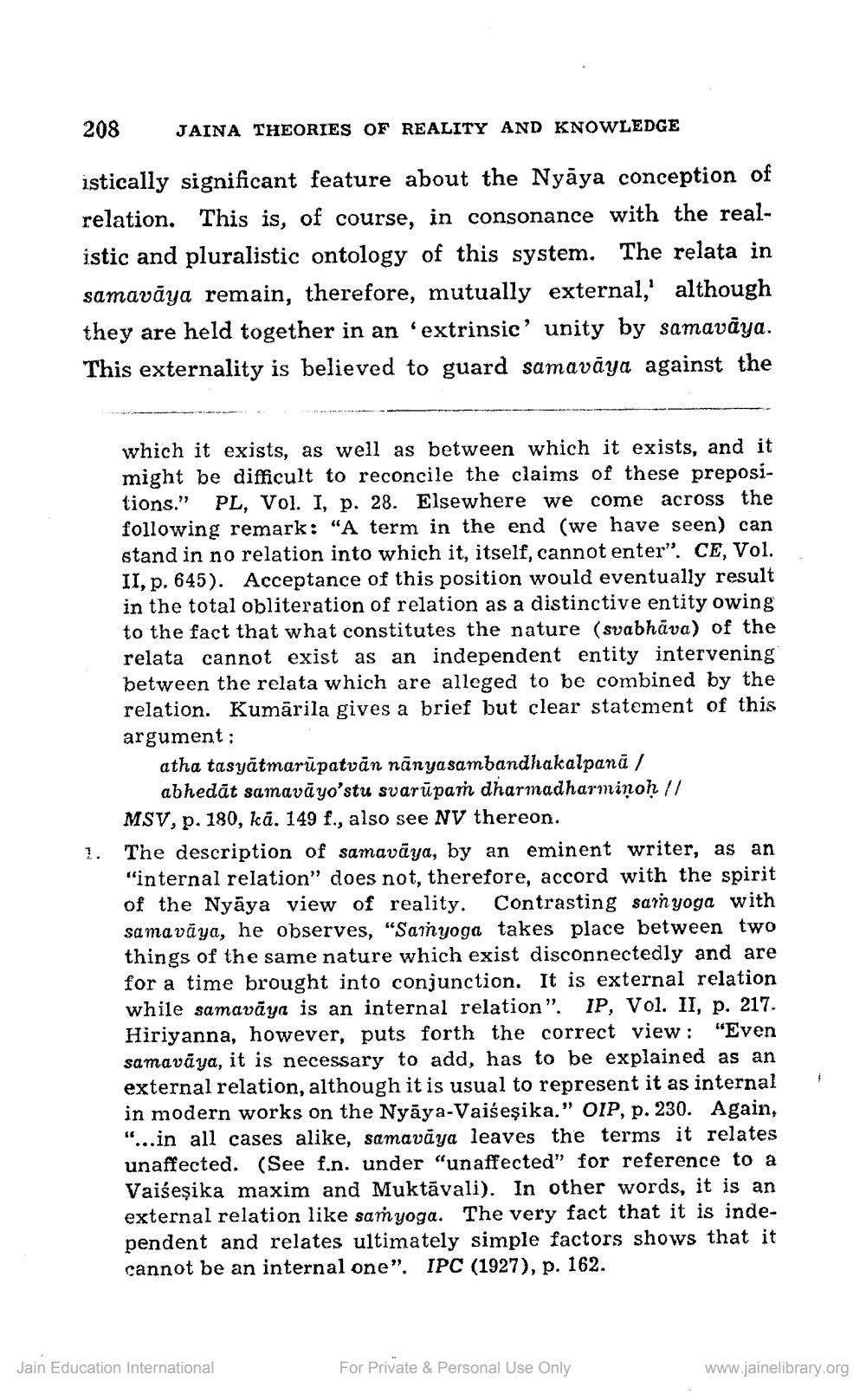________________
208
JAINA THEORIES OF REALITY AND KNOWLEDGE
istically significant feature about the Nyāya conception of relation. This is, of course, in consonance with the realistic and pluralistic ontology of this system. The relata in samavāya remain, therefore, mutually external,' although they are held together in an 'extrinsic' unity by samavāya. This externality is believed to guard samavāya against the
1.
which it exists, as well as between which it exists, and it might be difficult to reconcile the claims of these prepositions." PL, Vol. I, p. 28. Elsewhere we come across the following remark: "A term in the end (we have seen) can stand in no relation into which it, itself, cannot enter". CE, Vol. II, p. 645). Acceptance of this position would eventually result in the total obliteration of relation as a distinctive entity owing to the fact that what constitutes the nature (svabhāva) of the relata cannot exist as an independent entity intervening between the relata which are alleged to be combined by the relation. Kumärila gives a brief but clear statement of this argument:
atha tasyātmarūpatvan nanyasambandhakalpana /
abhedāt samavāyo'stu svarūpam dharmadharminoh // MSV, p. 180, kā. 149 f., also see NV thereon. The description of samavāya, by an eminent writer, as an "internal relation" does not, therefore, accord with the spirit of the Nyāya view of reality. Contrasting sarnyoga with sa mavaya, he observes, "Samyoga takes place between two things of the same nature which exist disconnectedly and are for a time brought into conjunction. It is external relation while samavāya is an internal relation". IP, Vol. II, p. 217. Hiriyanna, however, puts forth the correct view: "Even samavāya, it is necessary to add, has to be explained as an external relation, although it is usual to represent it as internal in modern works on the Nyāya-Vaišeşika." OIP, p. 230. Again, "...in all cases alike, samavāya leaves the terms it relates unaffected. (See f.n. under "unaffected" for reference to a Vaiseșika maxim and Muktāvali). In other words, it is an external relation like samyoga. The very fact that it is independent and relates ultimately simple factors shows that it cannot be an internal one". IPC (1927), p. 162.
Jain Education International
For Private & Personal Use Only
www.jainelibrary.org




